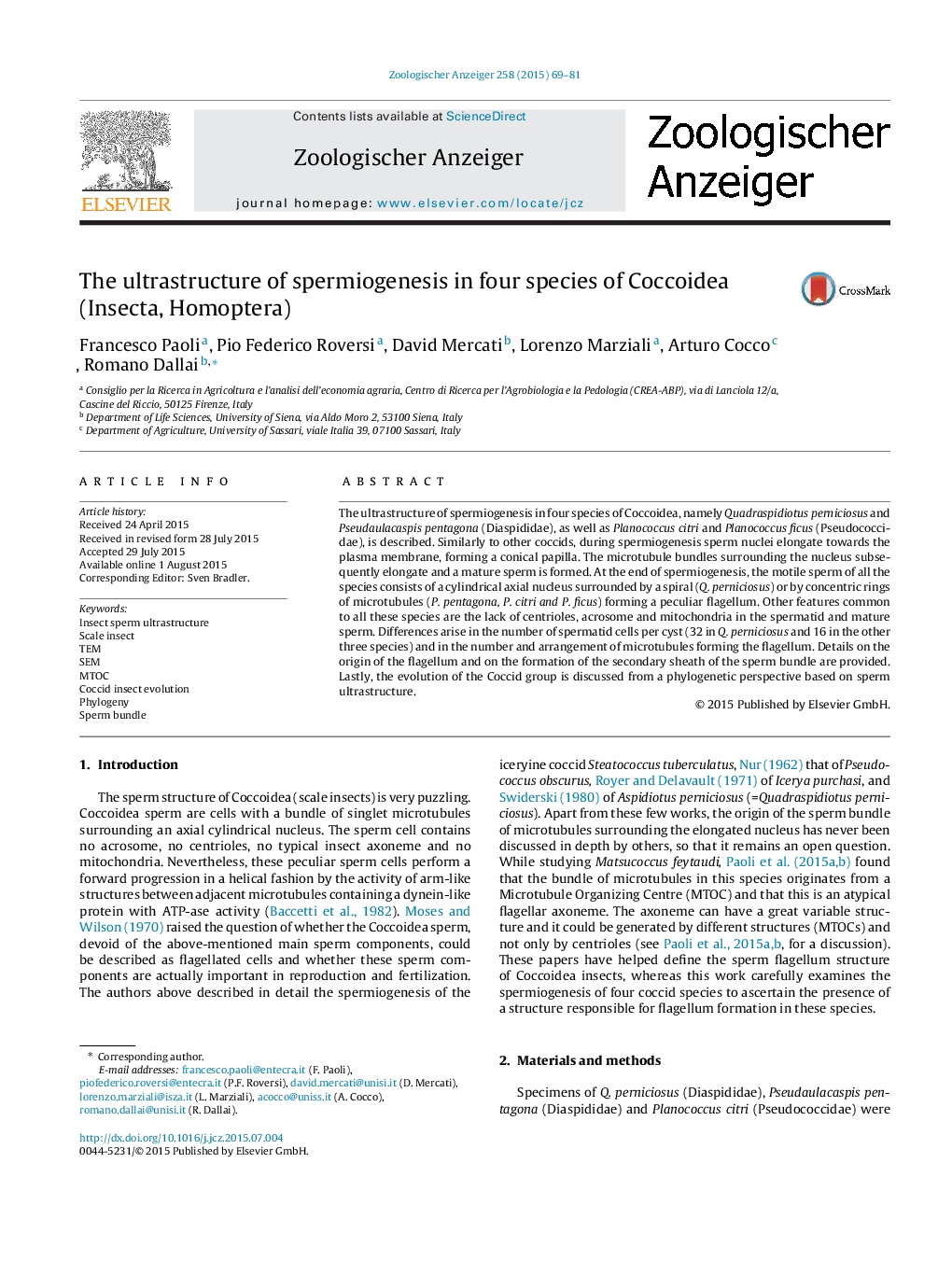| Article ID | Journal | Published Year | Pages | File Type |
|---|---|---|---|---|
| 2790515 | Zoologischer Anzeiger - A Journal of Comparative Zoology | 2015 | 13 Pages |
•The spermiogenesis ultrastructure of 4 Homoptera Coccoidea (Insecta) is described.•An atypical motile sperm flagellum consisting of a bundle of singlet microtubules is described.•The microtubules of the bundle have a greater diameter in their proximal region.•The secondary sheath enveloping the sperm bundle is secreted by the cyst cell.
The ultrastructure of spermiogenesis in four species of Coccoidea, namely Quadraspidiotus perniciosus and Pseudaulacaspis pentagona (Diaspididae), as well as Planococcus citri and Planococcus ficus (Pseudococcidae), is described. Similarly to other coccids, during spermiogenesis sperm nuclei elongate towards the plasma membrane, forming a conical papilla. The microtubule bundles surrounding the nucleus subsequently elongate and a mature sperm is formed. At the end of spermiogenesis, the motile sperm of all the species consists of a cylindrical axial nucleus surrounded by a spiral (Q. perniciosus) or by concentric rings of microtubules (P. pentagona, P. citri and P. ficus) forming a peculiar flagellum. Other features common to all these species are the lack of centrioles, acrosome and mitochondria in the spermatid and mature sperm. Differences arise in the number of spermatid cells per cyst (32 in Q. perniciosus and 16 in the other three species) and in the number and arrangement of microtubules forming the flagellum. Details on the origin of the flagellum and on the formation of the secondary sheath of the sperm bundle are provided. Lastly, the evolution of the Coccid group is discussed from a phylogenetic perspective based on sperm ultrastructure.
